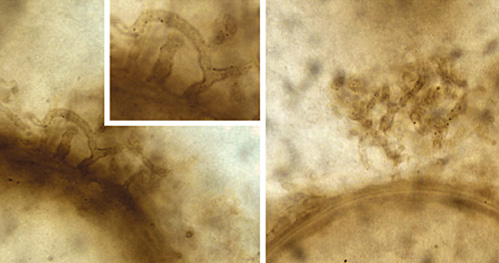A new type of ancient fungus in Devonian wetlands
Former MGAP student Zoe Moore is the first author of this study, published in the journal Neues Jahrbuch für Geologie und Paläontologie – Abhandlungen
15.01.2025
Morre Z., & Krings M. (2025): Morphological diversity of fungal reproductive units in the Lower Devonian Rhynie cherts of Scotland: a new type with a two-layered hyphal mantle. Neues Jahrbuch für Geologie und Paläontologie – Abhandlungen, 313 (3), 233-243. DOI: 10.1127/njgpa/2025/1232
The authors have discovered a new type of ancient fungus in 407-million-year-old rocks from Scotland. The fungus, named Veterisphaera dumosa, has a tiny round body surrounded by branching filaments, some of which form tree-like shapes. It’s the tenth unique reproductive structure found in these rocks, showing that early land fungi were more diverse than we once thought. This fossil helps researchers better understand how fungi lived and reproduced in some of Earth’s first land environments. While the exact type of fungus is still uncertain, its discovery adds a new piece to the puzzle of early life on land.


